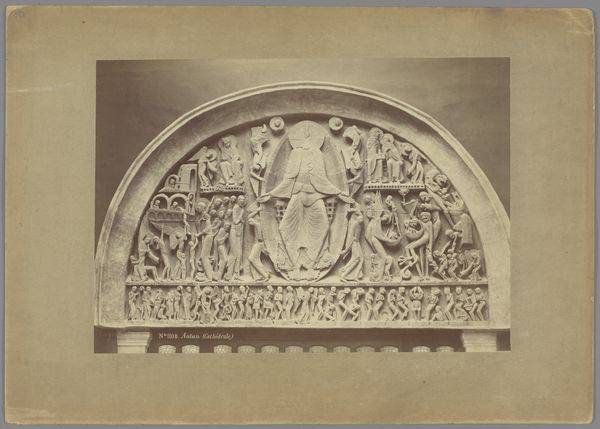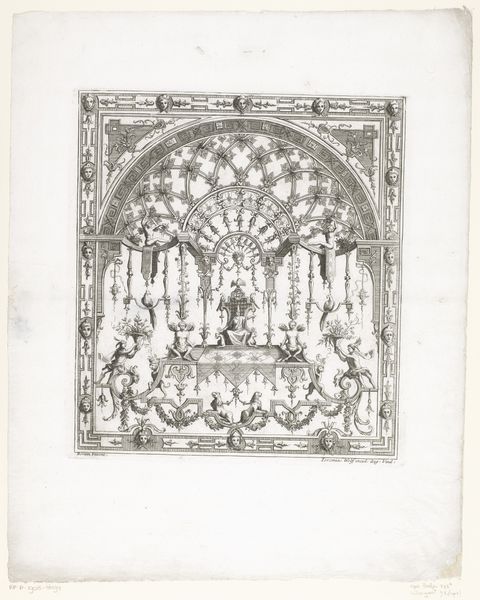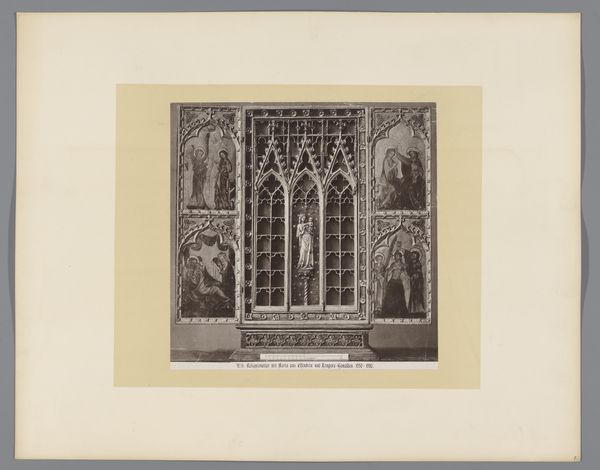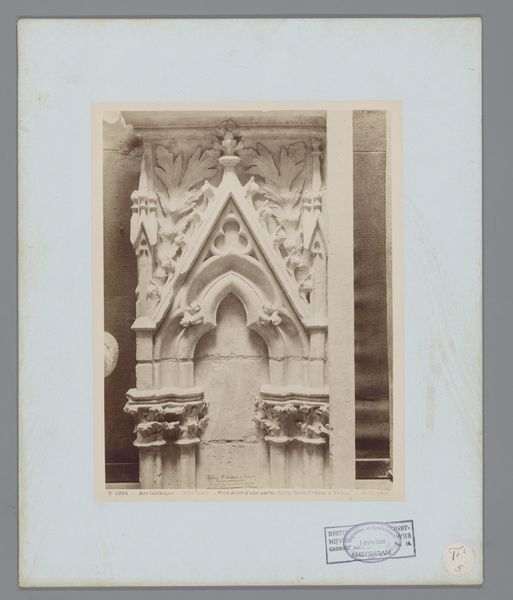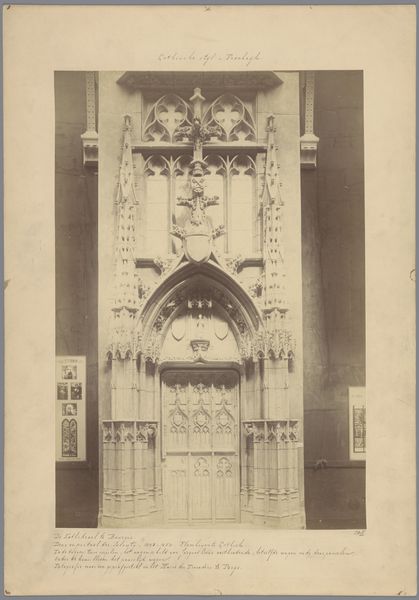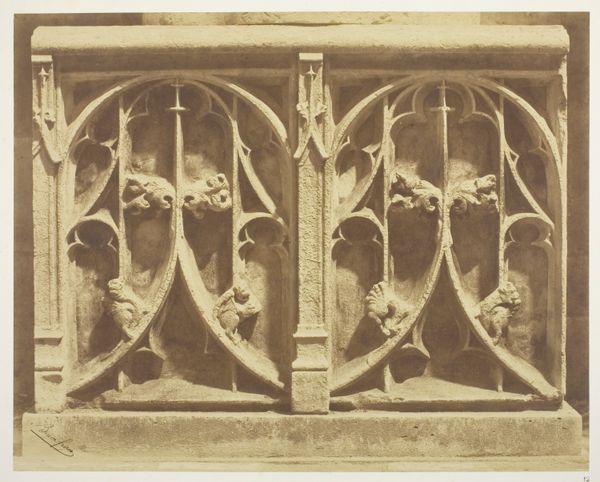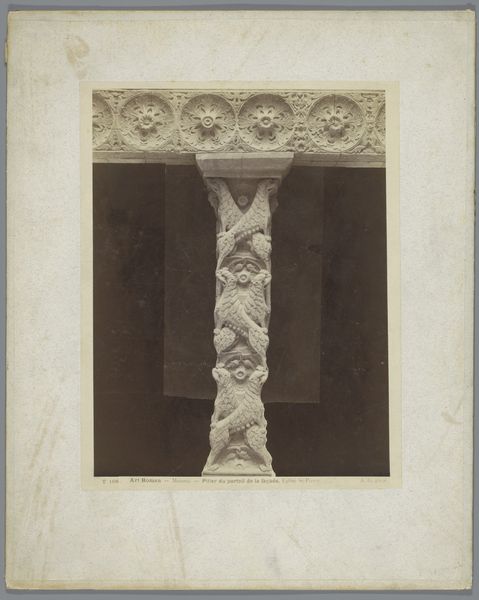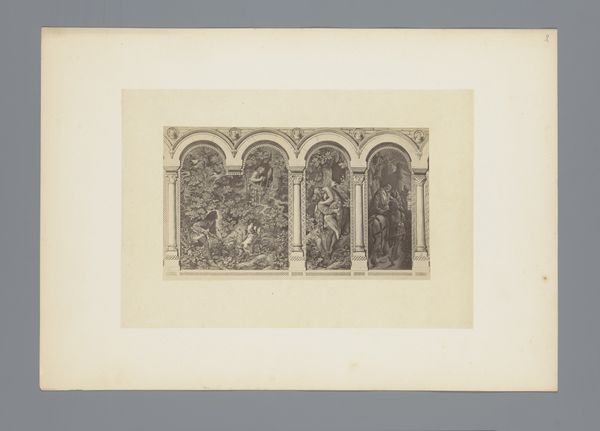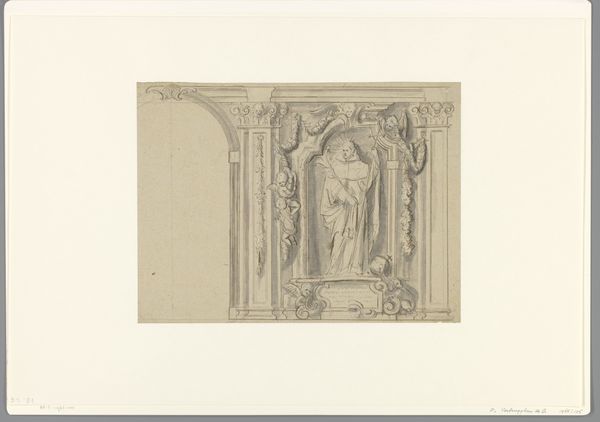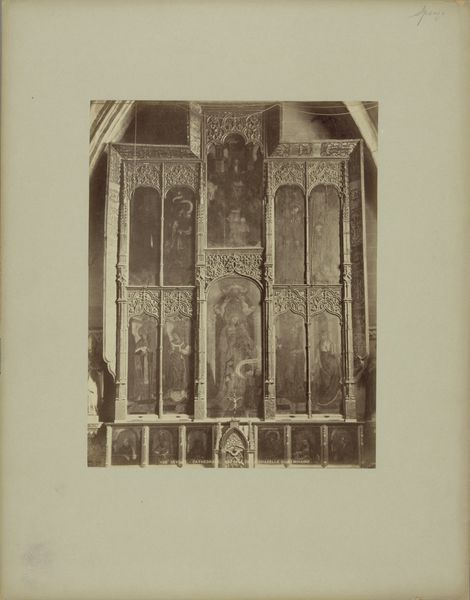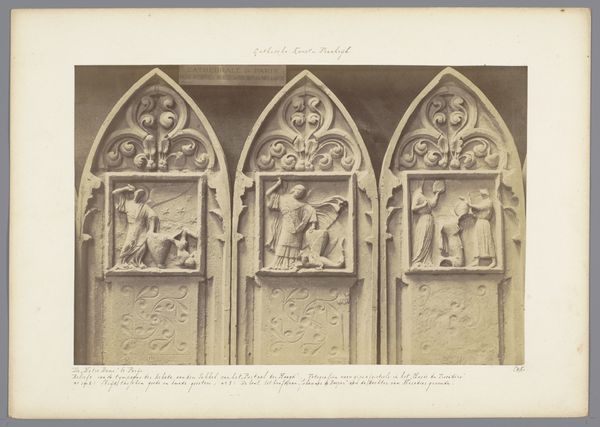
Dimensions: height 304 mm, width 371 mm
Copyright: Rijks Museum: Open Domain
Curator: Looking at this photograph, I am struck by the stark contrasts, almost as if it were sculpted light. Editor: Indeed. This gelatin-silver print, created sometime between 1850 and 1900 by Adolphe Giraudon, captures the tympanum of the Saint-Urbain Basilica in Troyes. It allows us to examine the late Gothic architectural details. Think about the labor that went into the original carvings and then the choices involved in photographing it for mass consumption. Curator: Absolutely. The act of photographing such detailed gothic sculpture immediately opens up a discussion around labor, artistic practice, and reproduction. The print translates stone into an object of reproducibility, altering its function. It almost democratizes high art, bringing inaccessible architecture into the hands of the masses. Editor: I appreciate that perspective. However, I would add the photographic reproduction isn't neutral. The Basilica's gothic features speak to historical power structures—religious, political, and even gendered. Giraudon's photo, although democratizing in reach, may also flatten those historical complexities for the sake of aesthetic consumption. Who had access and could afford the print? How does the church then retain relevance and meaning, and for whom? Curator: I see your point. There is an implicit claim being made about what's worth preserving or how history should be accessed and viewed. We must ask, what commentary did Giraudon offer through his specific framing and choice of this subject matter? How does that interplay with the cultural biases inherent to that era and that location? Editor: I think engaging with images such as these through the intersection of materials, accessibility and historic meaning allows us to open to deeper questions, revealing layered insights into the construction of value in art and its ongoing impact on society. Curator: Precisely. Considering both the production process of this print, its means of distribution, and the history it depicts— it offers such a multilayered study for comprehending our past.
Comments
No comments
Be the first to comment and join the conversation on the ultimate creative platform.
